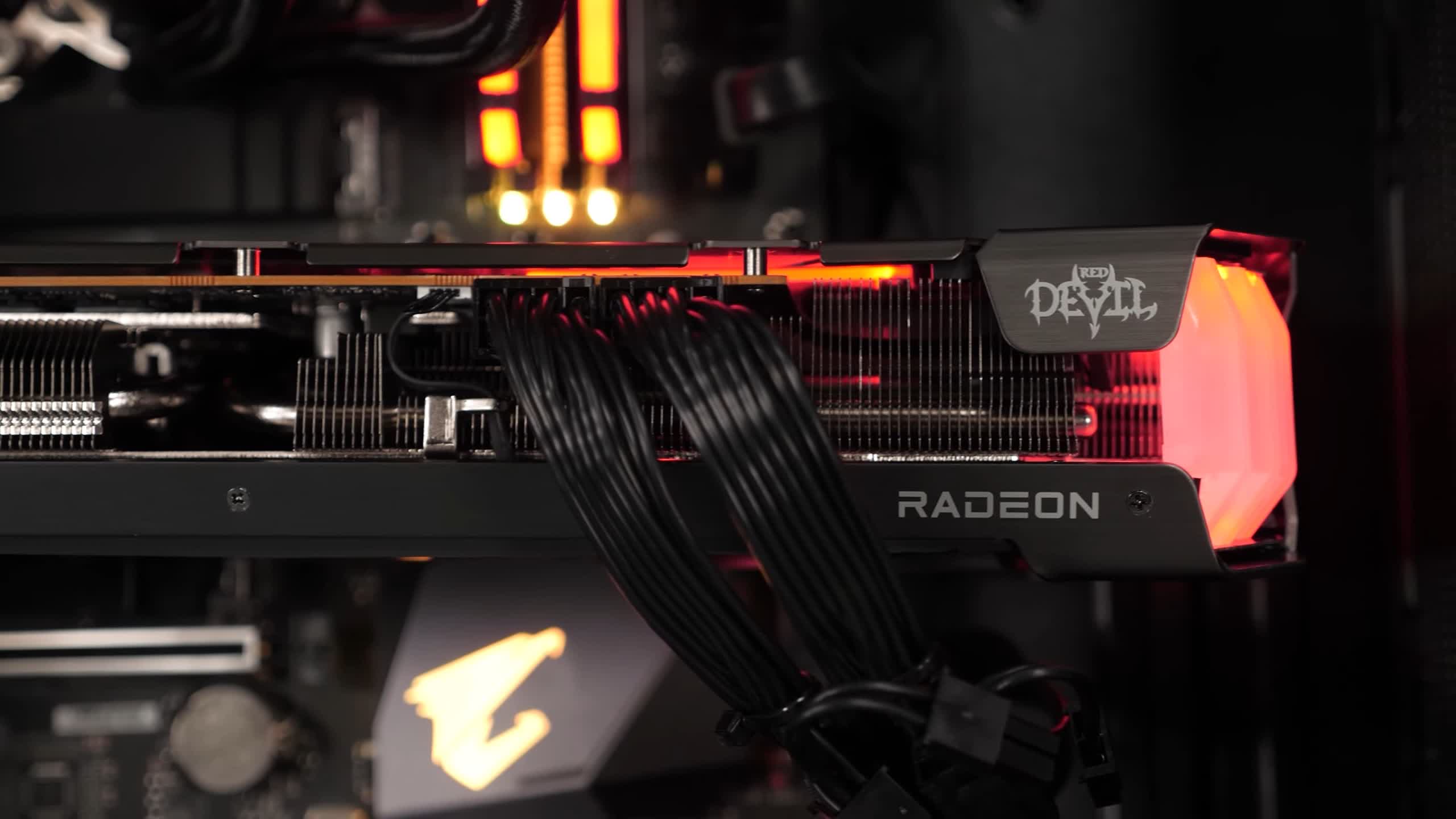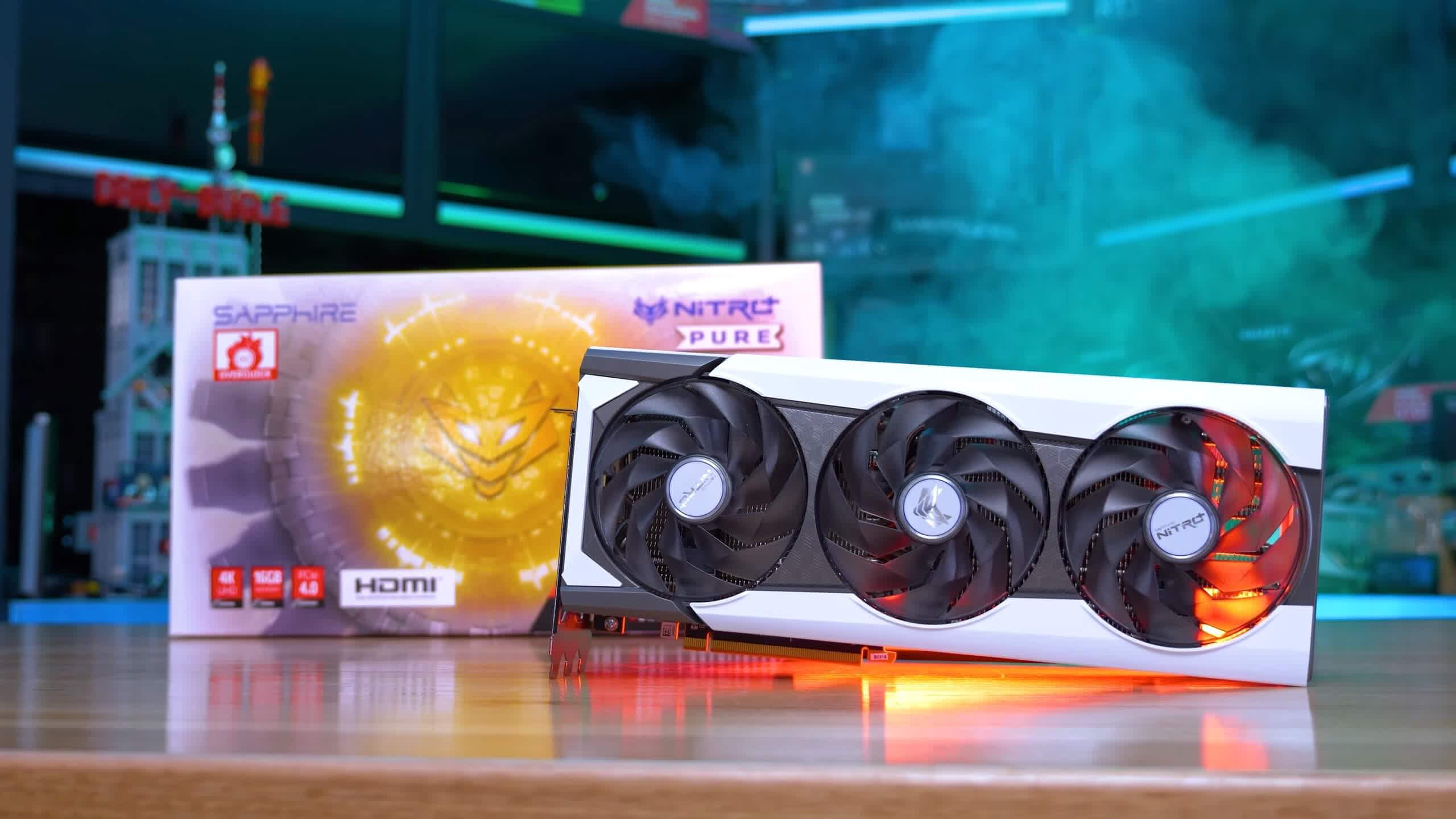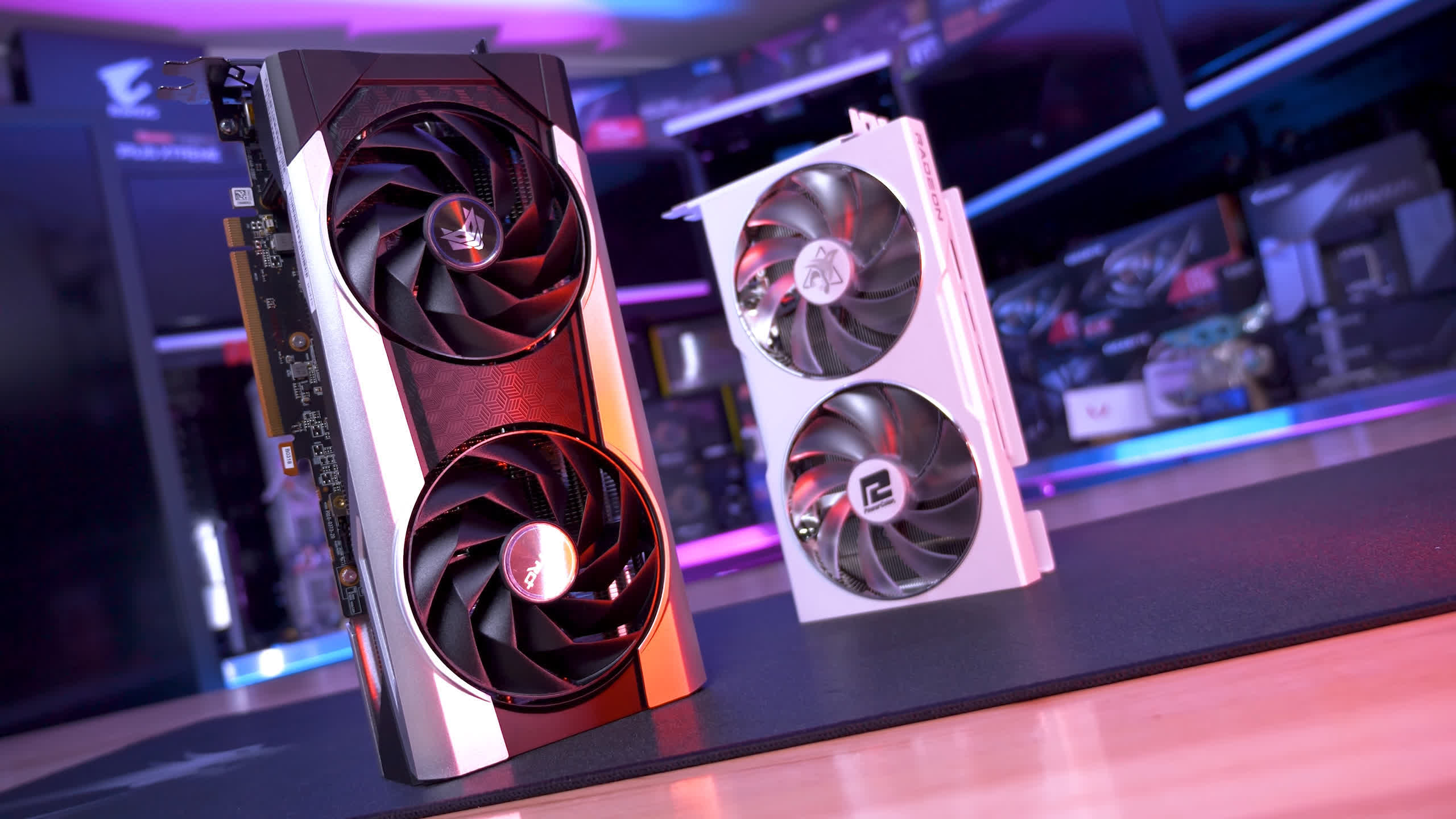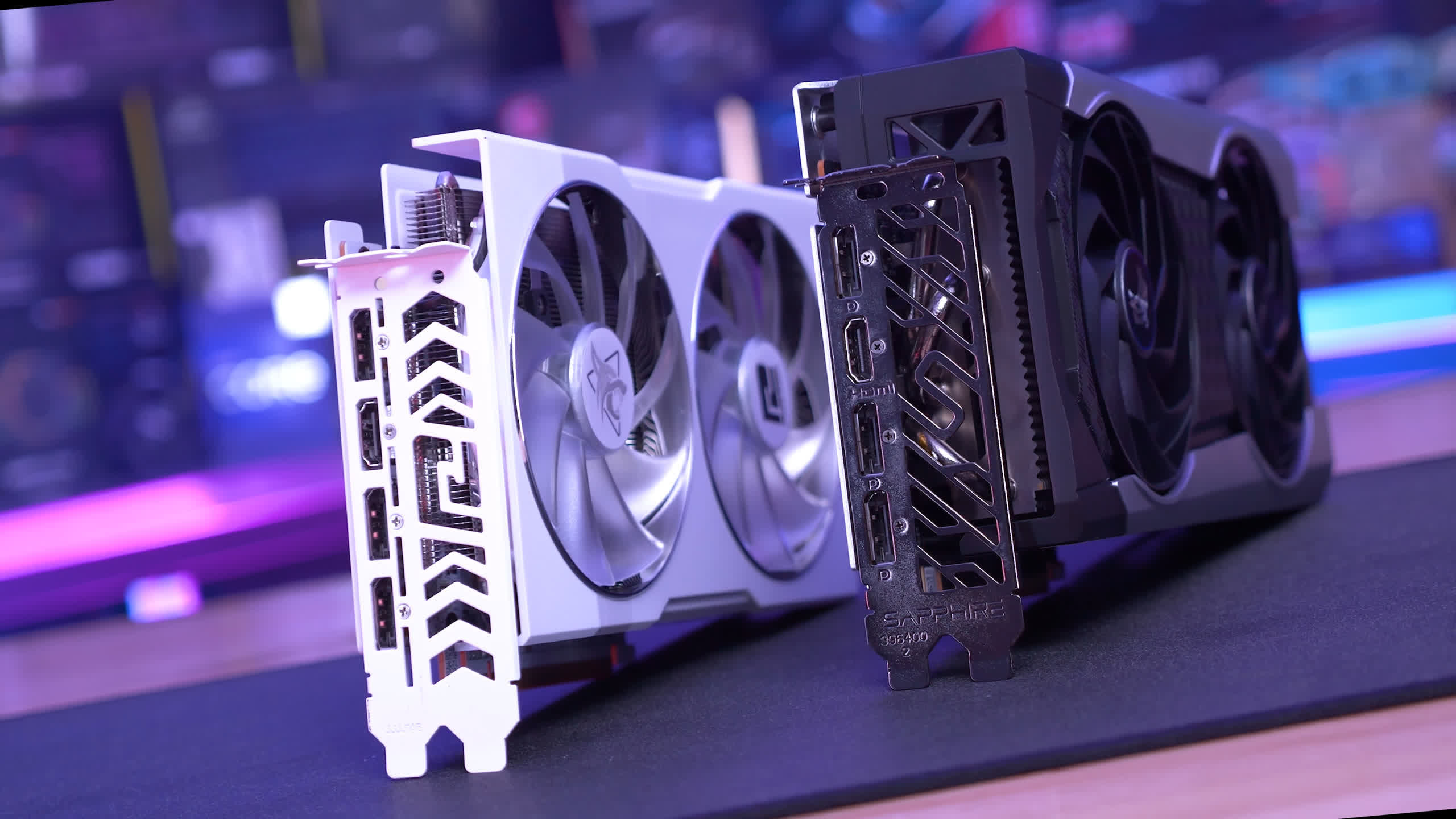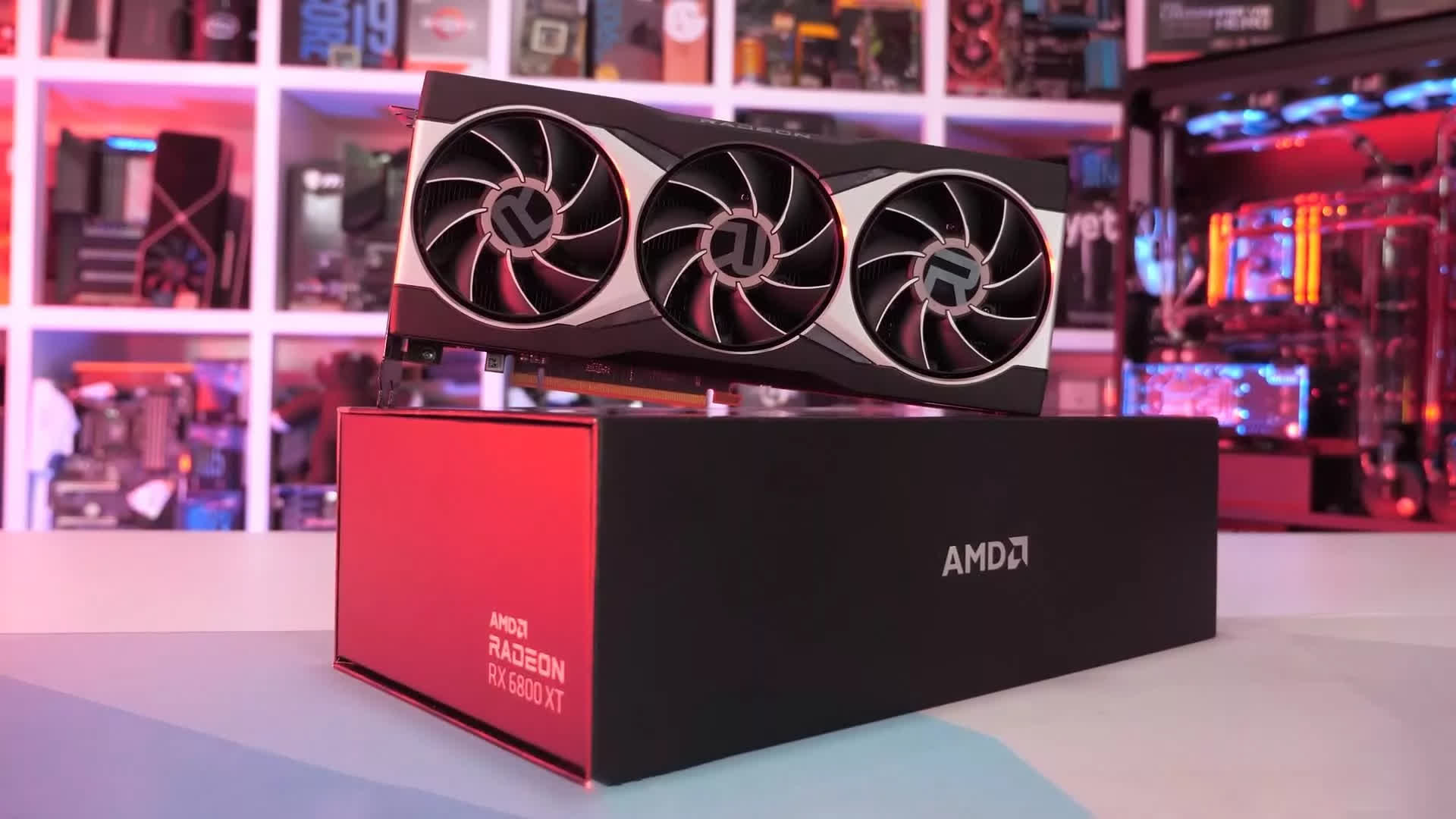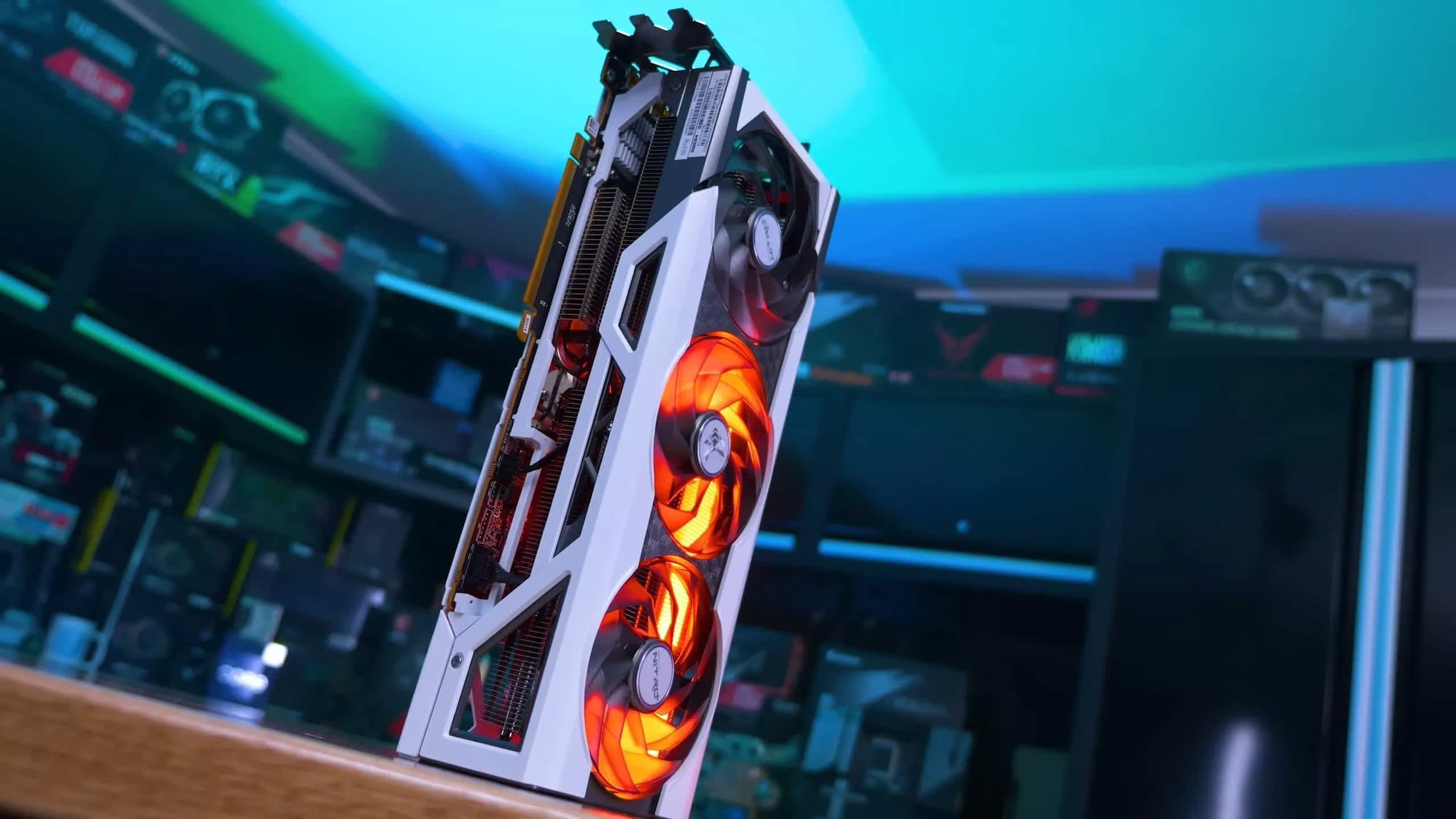Earlier this month, AMD released a new Adrenalin Edition 22.5.1 driver, which is the same driver we used to test all GPUs for the new Radeon refresh models including the 6650 XT, 6750 XT and 6950 XT. The highlights of the driver release notes was that it added support for the new Radeon models and nothing else, but that same day, AMD released a second driver called "AMD Software Preview Driver May 2022," and the release notes for that driver were quite interesting.
AMD's release notes claim that DirectX 11 optimization for Radeon RX 6000 series GPUs could result in up to an 8% performance improvement for the Radeon RX 6950 XT, versus the previous software driver version 22.5.1. And while they used the 6950 XT as an example, the claim is that all RX 6000 GPUs should see improved DX11 performance.
The notes also claim optimizations for SAM (Smart Access Memory) in Death Stranding and Watch Dogs Legion, with gains as high as 24%. Those are rather substantial boosts which could help improve Radeon RX 6000 series performance and help them stack up better against the GeForce competition.
To find just how much of a difference the new driver makes, we took our 50 game lineup to compare the Radeon driver version 22.5.1 and the new Preview Driver using the Radeon RX 6700 XT. Ideally we should have tested more GPUs but for a 50 game sample I think you'll understand why we limited the testing to a single graphics card.
For all testing Resizable BAR was enabled – that's SAM for the Radeon GPUs – and we're using a system powered by the Ryzen 9 5950X with 32GB of dual-rank, dual channel memory. All 50 games were benchmarked at 1080p, 1440p and 4K resolutions. As usual we'll look at the performance across all 50 games, but before that we'll go over the data for a few games individually.
Benchmarks
AMD claimed anywhere from a 6% to a 24% performance improvement in Watch Dogs Legion with SAM enabled, depending on the GPU used. Here we have the Radeon 6700 XT which was up to 17% faster using the preview driver, seen at 1440p where frame rates were increased from 82 fps to 96 fps. This is a solid increase that saw the 6700 XT lead the RTX 3070 by 9% margin whereas previously it was 7% slower.


The other game that was claimed to offer performance boost using SAM was Death Stranding and this is another title that we were already testing. AMD claimed up to a 12% boost and with the Radeon 6700 XT we observed an 11% boost at 1080p, 14% at 1440p, and then just 5% at 4K.
This is good for the 6700 XT in its fight with the RTX 3070 because previously at 1440p the Radeon GPU was 4% slower, but now it's 9% faster with the preview driver.

Now let's move on to check out some of the more impressive gains we saw with the preview driver in titles that weren't mentioned in the release notes.
Here we have The Witcher 3, where the preview driver boosted performance by up to 10% at 1440p. That's a nice gain that helped the 6700 XT compete with the more expensive RTX 3070. Previously it was 12% slower than the GeForce GPU, now it's just 3% slower.

Moving on to Apex Legends, we find a 9% boost at 1080p, 8% at 1440p and then 6% at 4K. Again, where the Radeon was slower than the RTX 3070 at 1080p and 1440p, it's now able to match it.
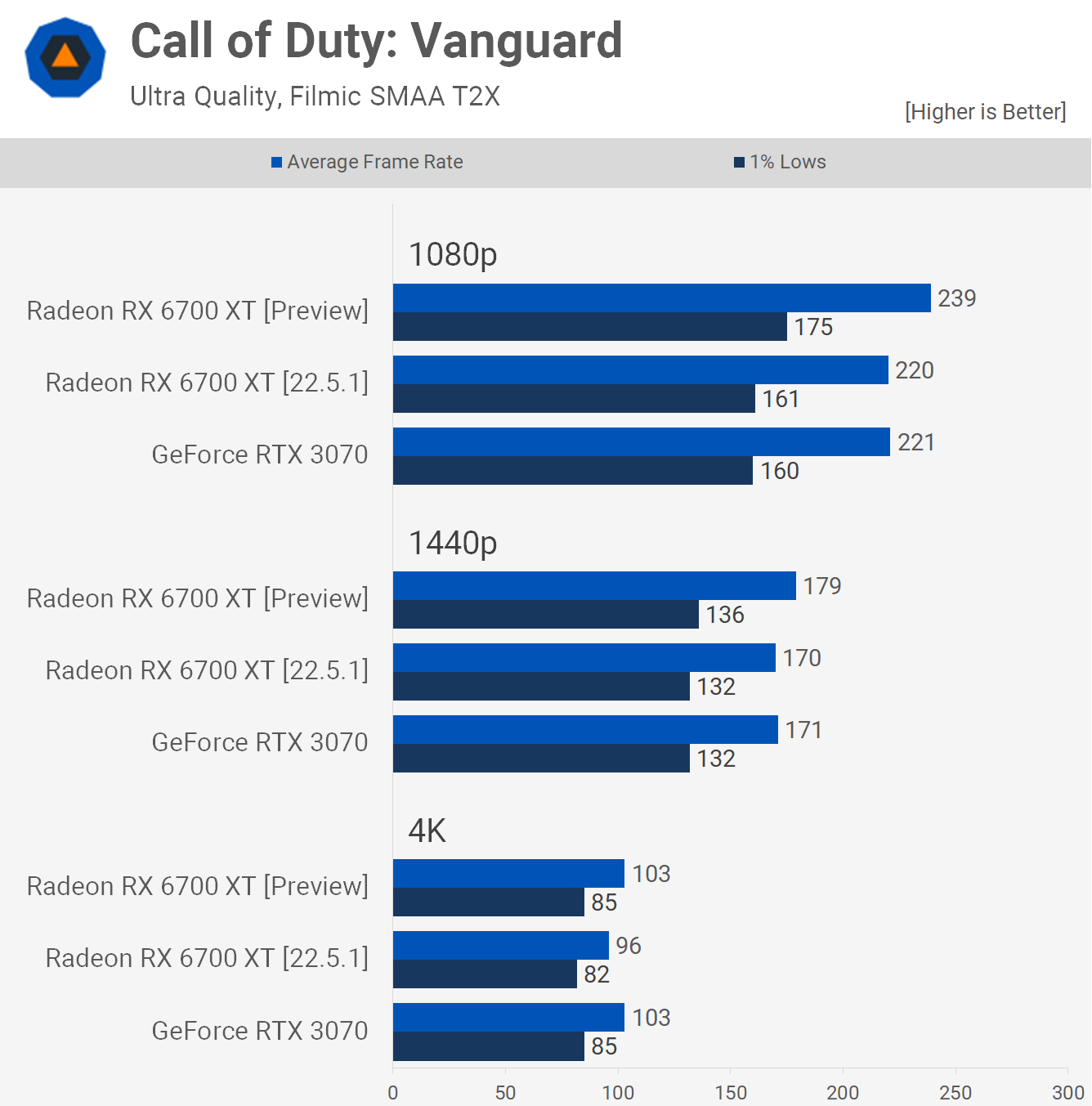
Interestingly, Call of Duty Vanguard which by default uses DX12, still saw a performance improvement with the preview driver. At 1080p frame rates were improved by 9%, then a more mild 5% at 1440p and 7% at 4K. This was enough to give the 6700 XT a performance advantage at 1080p and 1440p while it caught the RTX 3070 at 4K.

Shadow of the Tomb Raider is another game we test using DX12, but even here the preview driver did offer some improvement. At 1080p performance was boosted by 7%, then just 4% at 1440p and 4K. The gains were consistent across our testing and while certainly not huge, it helped the 6700 XT close in on the RTX 3070, making it 6% slower at 1440p opposed to 10% slower.
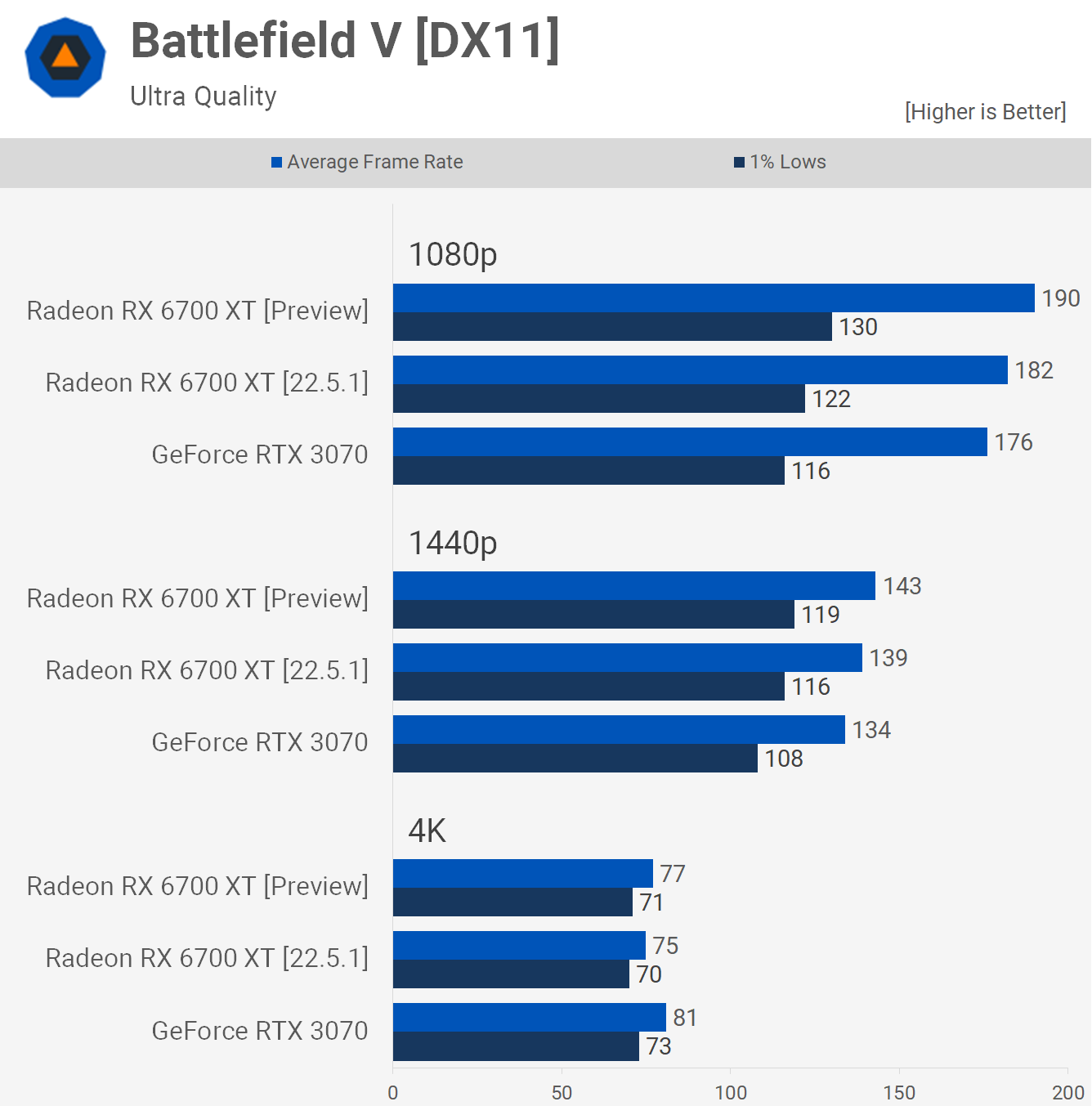
Battlefield V runs best using the DX11 API and therefore this is typically how we test the game. The new preview driver did improve performance and while the gains were consistently produced, they're also rather small.
We're looking at 4% at 1080p, 3% at 1440p and 4K. Not exactly game changing results, but it is free performance.
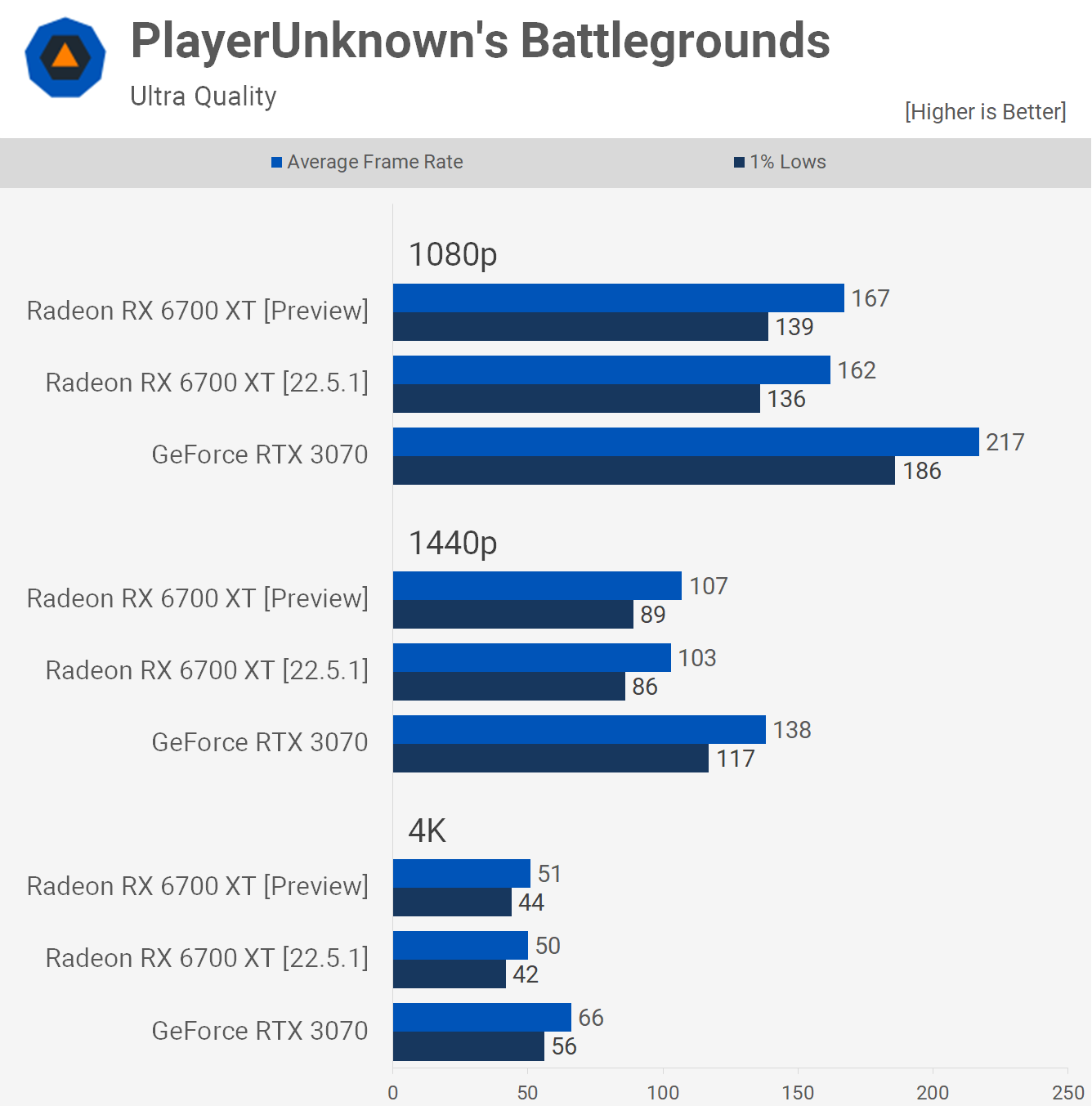
We also test PUBG using DX11 and here the Radeon GPUs generally get crushed by the GeForce competition and the preview driver didn't help much to change that. We're looking at 3-4% more performance which is basically nothing when you consider that the RTX 3070 is still 30% faster at 1080p.
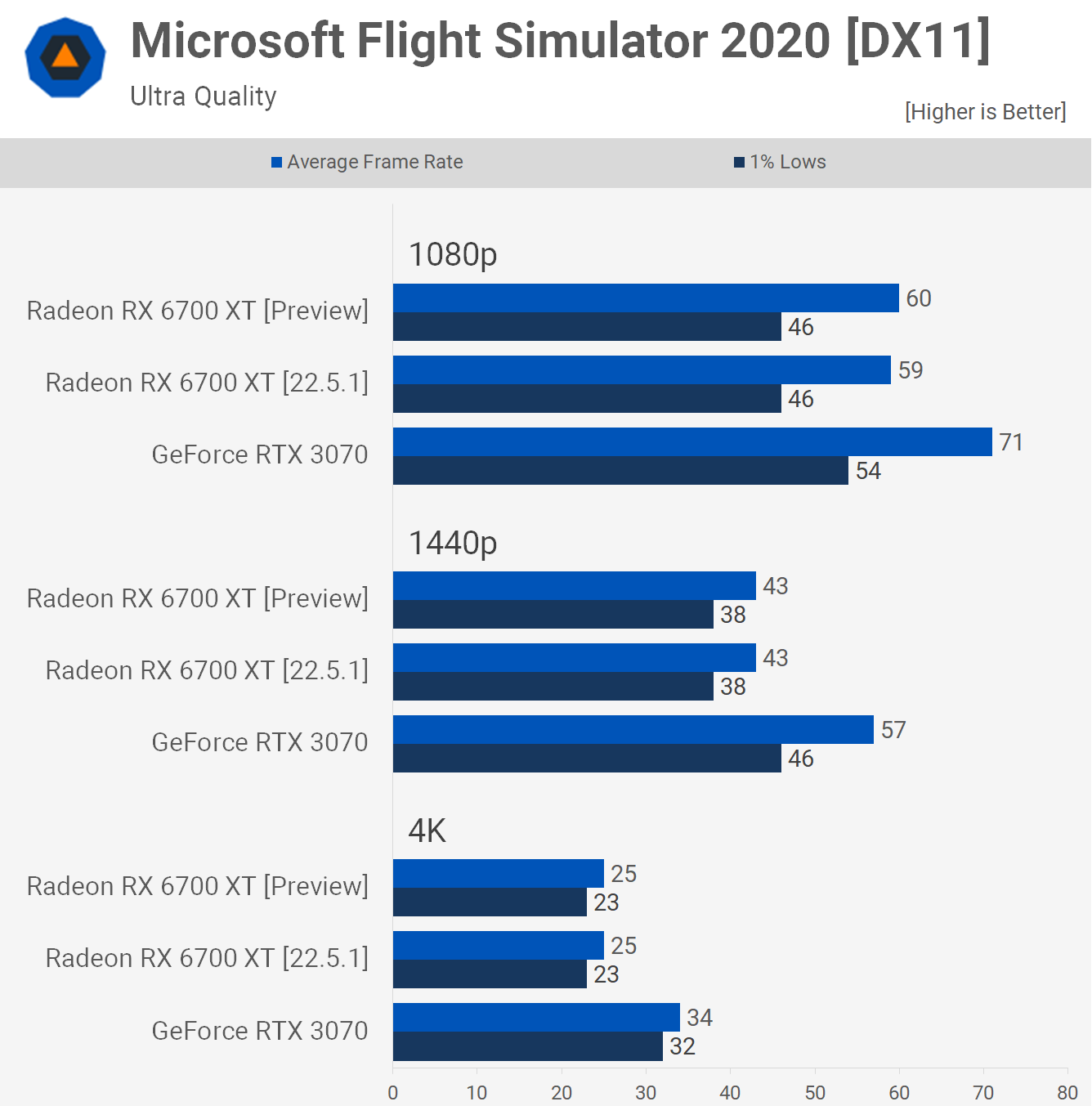
Microsoft Flight Simulator is also tested using DirectX 11 and like a lot of games we found no performance gains.

War Thunder is another DX11 title that saw no performance improvement with the preview driver, and this is another title where Nvidia doesn't have a substantial performance advantage.
Performance Summary
We saw a bit of everything from impressive gains, to some rather miniscule changes, and then nothing at all. Therefore the big question is, just how much does this new driver help across a wide range of games and to answer that we'll move on to the 50 game comparison at 1080p, 1440p and 4K...

Starting with 1080p, we see that as impressive as some of the gains are, the overall picture isn't changed with a 3% performance boost on average. The only game where performance really went backwards was Godfall and that could just be a bug, but even so if we were to remove that result the margin remains at 3%.
Although the SAM performance gains in Watch Dogs Legion and Death Stranding were mighty impressive and the uplift for games such as Apex Legends and Vanguard were also excellent, for the most part we're looking at gains of 4% or less. In fact, 36 of the 50 games tested saw a performance change of 4% or less.

Moving to 1440p sees the overall margin reduced to 2% in favor of the preview driver and now we have just three games where performance was improved by double-digits, which is still mighty impressive, but it doesn't much to change the overall picture.
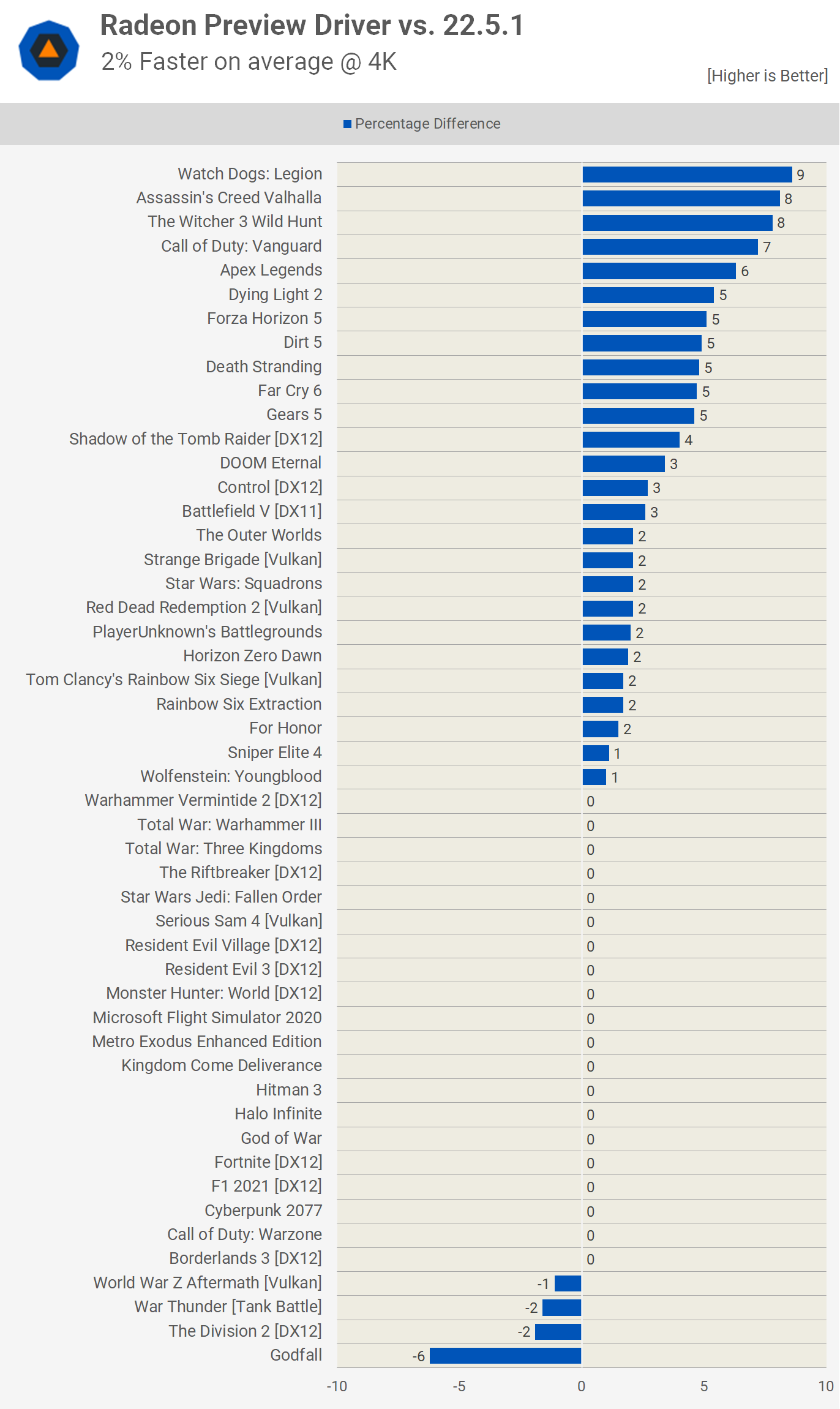
At 4K we see an overall improvement of 2%, but not a single game with double digit gains and just 5 titles where the performance uplift exceeded 5%.
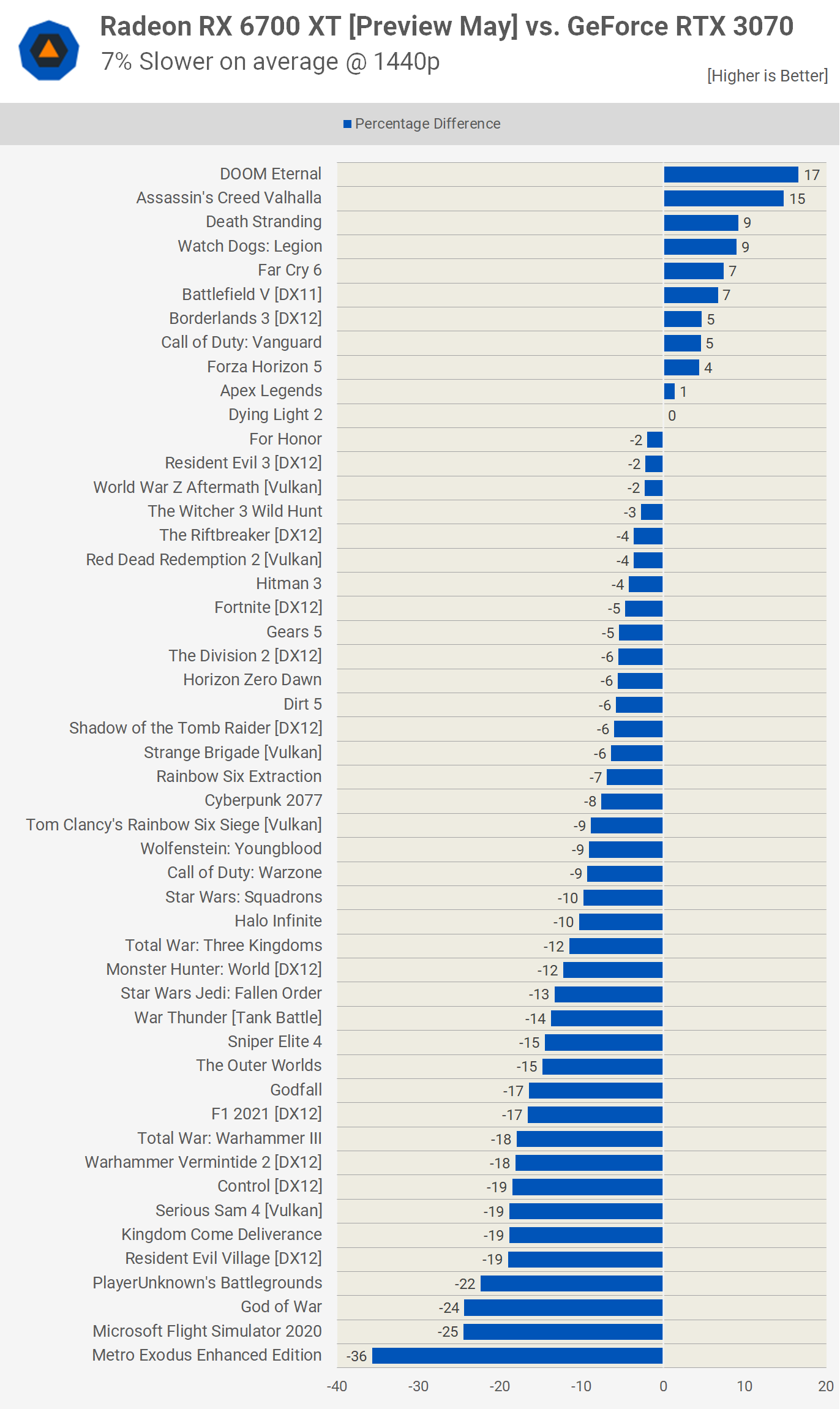
Before this driver release we found the RTX 3070 to be 11% faster than the 6700 XT on average and although we're calculating the margins in the reverse order here, you can see that overall the 6700 XT is now 7% slower, so a few percent change that based on current pricing makes the Radeon GPU the more attractive choice for this particular match up.
Performance Boost or Not?
It's always great to see some extra performance delivered at no additional cost and that's what we've seen here in a few instances. Unfortunately, the DX11 gains aren't seen across the board and they were for the most part quite soft. Games where Radeon GPUs struggle compared to GeForce competitors go unchanged, such as PUBG and The Outer Worlds.
Overall we'd say the preview driver is a great step for AMD and it wasn't something we were expecting to see. That said, we think these results will disappoint some of you after looking at headlines that painted a much more positive picture with gamers expecting at least 4% across the board with gains often much higher in certain titles.
Certainly, if you focus on games such as Watch Dogs Legion, Death Stranding, The Witcher, Apex Legends, Forza and Vanguard, to cite a few good examples, you're looking at a 10% improvement on average which is a very substantial uplift from a driver update.
But when it comes to our 50 game head-to-head battles, on average the gains are just a few percent, or even less than comparing SAM on vs. off results. Then again, every bit helps and with Radeon GPUs already more affordable than the competition, this can tip the value equation further in AMD's favor.
Bottom line, we don't expect this driver will change reviewers' GPU recommendations, but we don't want to water down the gains seen as some of them were truly impressive. All in all, good stuff from AMD.
